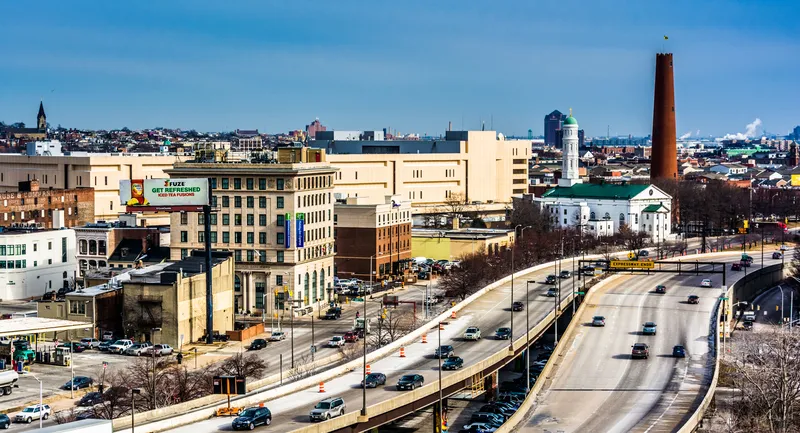According to a new analysis of the City of St. Louis' violator-funded red-light safety camera program carried out by safety camera supplier American Traffic Systems (ATS), drivers are adopting safer driving habits by stopping at red lights. As drivers comply with the law, the risk of dangerous red-light running collisions is reduced, and streets become safer for drivers, pedestrians and cyclists. The study reviewed nearly 350,000 red-light running violations issued in the city from the time the program bega
November 5, 2012
Read time: 3 mins
According to a new analysis of the City of St. Louis' violator-funded red-light safety camera program carried out by safety camera supplier 6826 American Traffic Systems (ATS), drivers are adopting safer driving habits by stopping at red lights. As drivers comply with the law, the risk of dangerous red-light running collisions is reduced, and streets become safer for drivers, pedestrians and cyclists.
The study reviewed nearly 350,000 red-light running violations issued in the city from the time the program began in February 2007 to August 2012 and found nearly four out of every five drivers (nearly 80 per cent) who received one ticket did not get a second. Only 15 per cent of drivers received two violations. This low rate of recidivism indicates drivers are getting the message authorities are sending through red-light safety cameras.
So far in the program's lifetime, the number of red-light running violations has decreased on average 55 per cent at all locations, with reductions as high as 87 per cent at some of the locations where cameras were first installed.
Red light safety cameras allow the police to expand their ability to enforce traffic laws over a wider area while focusing their efforts on more violent crimes. Red-light safety camera video has also provided evidence to help investigate non-traffic related crimes. The program analysis found that the St. Louis Police Department requested video from red-light cameras on more than 70 occasions to help with the investigation of carjacking offences, attempted rape, shooting, robberies, homicides and simple accident reconstruction. Video from the red light cameras also helped in the investigation of the hit and run driver who killed St. Louis City Police Officer David Haynes in 2010. The requests are also referenced in police reports and entered into evidence to satisfy conflicting testimony.
St. Louis also receives economic benefits from red-light cameras. The program is 10 per cent funded by violators and not taxpayers. Every traffic crash exacts a financial cost on families, vehicles owners and the community at large. With every averted traffic crash, a community realises a savings in medical costs, emergency services expenses and other costs. According to a 2012 study by John Dunham and Associates, the use of one red-light safety camera in St. Louis saves the community an average of US$174,422 annually as a result of fewer traffic crashes.
ATS' study results are not unique to St. Louis. Independent studies have gone further and quantified the number of lives saved and crashes avoided. The Insurance Institute for Highway Safety in 2011 found fourteen cities with red-light cameras experienced a 24 percent reduction in red-light running fatalities. Also that year, a Texas Transportation Institute study found right-angle crashes, the most life-threatening type of red-light running collisions, decreased 32 percent at intersections with red-light safety cameras.
The study reviewed nearly 350,000 red-light running violations issued in the city from the time the program began in February 2007 to August 2012 and found nearly four out of every five drivers (nearly 80 per cent) who received one ticket did not get a second. Only 15 per cent of drivers received two violations. This low rate of recidivism indicates drivers are getting the message authorities are sending through red-light safety cameras.
So far in the program's lifetime, the number of red-light running violations has decreased on average 55 per cent at all locations, with reductions as high as 87 per cent at some of the locations where cameras were first installed.
Red light safety cameras allow the police to expand their ability to enforce traffic laws over a wider area while focusing their efforts on more violent crimes. Red-light safety camera video has also provided evidence to help investigate non-traffic related crimes. The program analysis found that the St. Louis Police Department requested video from red-light cameras on more than 70 occasions to help with the investigation of carjacking offences, attempted rape, shooting, robberies, homicides and simple accident reconstruction. Video from the red light cameras also helped in the investigation of the hit and run driver who killed St. Louis City Police Officer David Haynes in 2010. The requests are also referenced in police reports and entered into evidence to satisfy conflicting testimony.
St. Louis also receives economic benefits from red-light cameras. The program is 10 per cent funded by violators and not taxpayers. Every traffic crash exacts a financial cost on families, vehicles owners and the community at large. With every averted traffic crash, a community realises a savings in medical costs, emergency services expenses and other costs. According to a 2012 study by John Dunham and Associates, the use of one red-light safety camera in St. Louis saves the community an average of US$174,422 annually as a result of fewer traffic crashes.
ATS' study results are not unique to St. Louis. Independent studies have gone further and quantified the number of lives saved and crashes avoided. The Insurance Institute for Highway Safety in 2011 found fourteen cities with red-light cameras experienced a 24 percent reduction in red-light running fatalities. Also that year, a Texas Transportation Institute study found right-angle crashes, the most life-threatening type of red-light running collisions, decreased 32 percent at intersections with red-light safety cameras.








